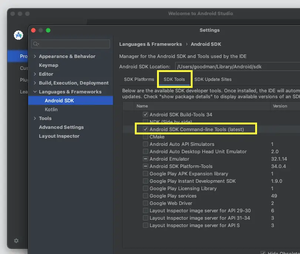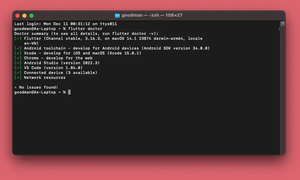Flutter, a popular open-source UI software development kit, is known for its ability to build applications for mobile, web, and desktop from a single codebase. However, developers often encounter certain errors while using Flutter, one of which is the Null check operator used on a null value error. This article delves into understanding this error and providing effective solutions.
Understanding the problem
In programming, null signifies ‘no value’ or ’empty’. A ‘null check operator’ (!) is used to confirm that a variable holds a non-null value before it is utilized. However, issues arise when the operator is used on a null value, throwing the ‘Null check operator used on a null value’ error.
For instance, consider the following Flutter code:
String? str; //Nullable String
int length = str!.length; //Error: Null check operator used on a null valueIn the above code, the nullable string ‘str’ is null, but the null check operator is used on it, which results in the error.
Solutions
Let’s explore a few solutions to handle this ‘Null check operator used on a null value’ error effectively.
Solution 1: Using Conditional Statements
One of the simplest methods is to use conditional statements to check if the variable is null before using it. Here’s an example:
String? str; //nullable value
int len = 0;
if(str != null){
len = str!.length;
} else {
len = 0; //return value if str is null
}
print(len); //output: 0In this bit of code, we first check if the ‘str’ string variable is null or not before retrieving its length.
Solution 2: Using Null Coalescing Operator
The null coalescing operator (??) is used to provide a default value for a null variable. The following code illustrates its usage:
String? str; //nullable value
Text(str ?? "String value is null");Here, if ‘str’ is null, the Text will display “String value is null”. If ‘str’ is not null, it will display the value of ‘str’.
Solution 3: Using Ternary Operator
The ternary operator (condition ? exprIfTrue : exprIfFalse) is another handy tool. Here’s an example:
str != null
? Container(
child: Text(str == "hello"
? "You have 1 message"
: "You haven't any message"),
)
: Card(
child: Text("Error while getting messages."),
);In this example, if ‘str’ is not null, the Container widget is used to display a message depending on the value of ‘str’. If ‘str’ is null, the Card widget displays an error message.
Solution 4: Using Fallback Operator
The fallback operator (??=) sets a default value for a null variable. Here’s an example:
String? str; //nullable value
str ??= "Fallback Value";
print(str); //Output: Fallback ValueIn this code, if ‘str’ is null, it gets assigned the fallback value.
All these solutions, when implemented correctly, can help you handle null values effectively and avoid the ‘Null check operator used on a null value’ error in Flutter.
Remember, understanding how to handle null values is crucial while working with Flutter. It not only helps in avoiding errors but also enhances the overall efficiency and performance of the application. Therefore, use these solutions wisely to make your Flutter programming experience smoother and more productive.
![[Solved] Flutter SocketException: Connection failed (Operation not permitted)](https://www.slingacademy.com/media/thumbnails/2024-11/Screenshot-2023-12-13-at-11.16.58-1.png)

